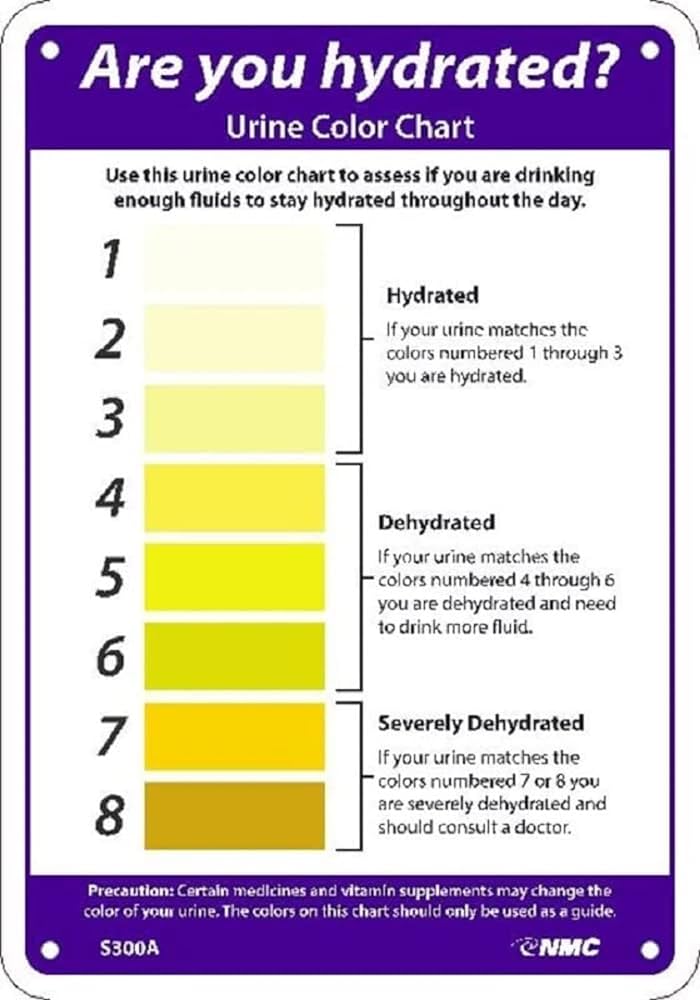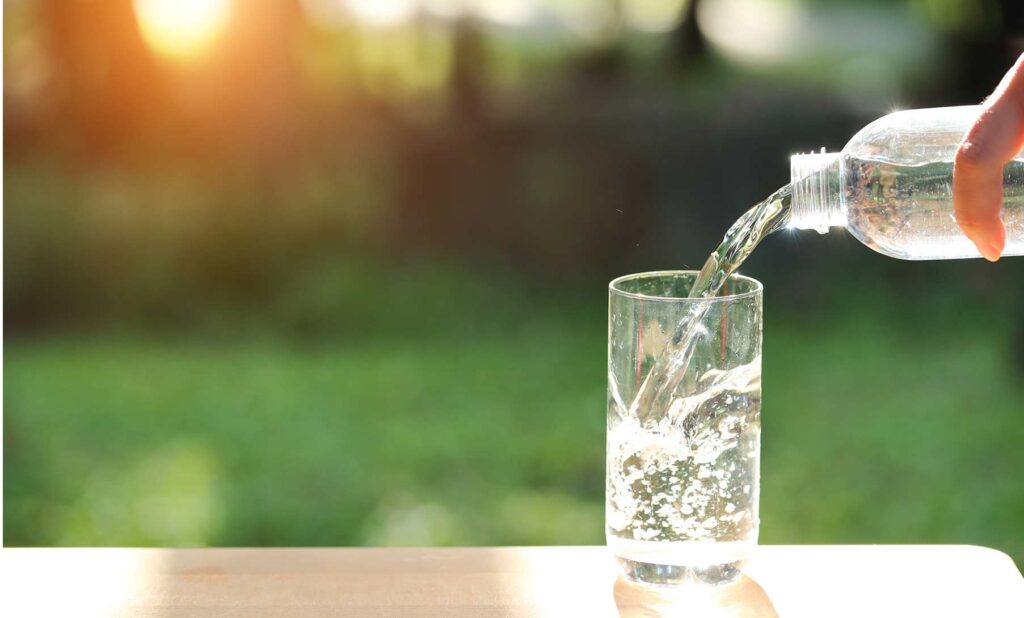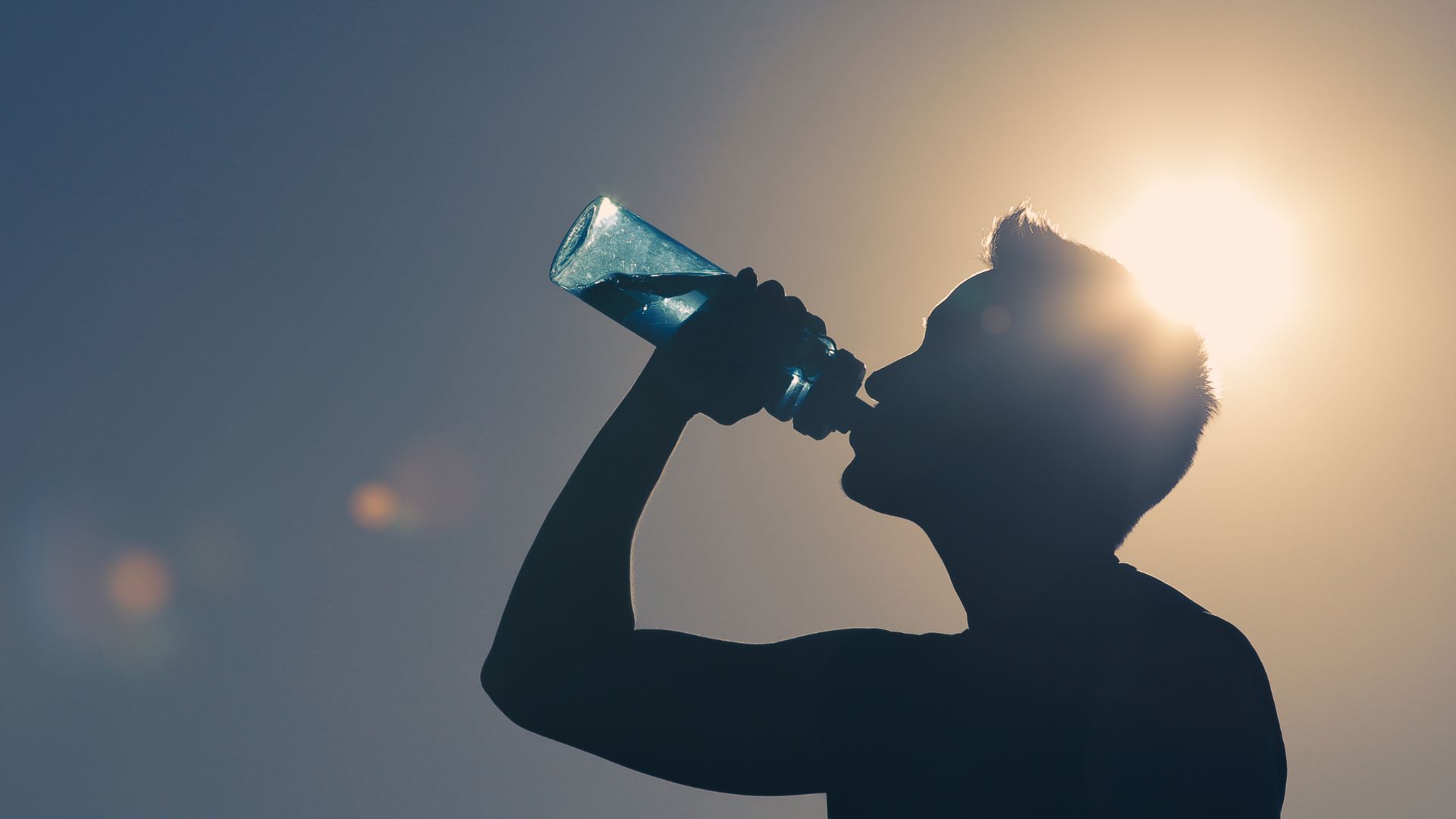Hydration tips for outdoor workers are crucial for maintaining their health and productivity. Exposure to heat and physical exertion increases the risk of dehydration. Drinking water frequently helps replace lost fluids and prevents heat-related illnesses. Sugary and caffeinated beverages can worsen dehydration, so they should be avoided.
Monitoring the color of urine is a simple way to check hydration levels; clear or light-colored urine indicates proper hydration. Carrying a water bottle and taking regular breaks in shaded areas can further help maintain hydration. Proper hydration not only supports overall well-being but also enhances work performance and safety.
Table of Contents
Importance Of Hydration Tips for Outdoor Workers
Outdoor workers face unique challenges. They work under the sun, which can lead to dehydration. Staying hydrated is crucial for maintaining health and performance.
Impact On Health
Dehydration can cause severe health issues. It can lead to heatstroke, kidney problems, and muscle cramps. Proper hydration helps regulate body temperature and keeps organs functioning.
Hydrated workers are less likely to suffer from fatigue and dizziness. They also have better skin health and fewer headaches. Drinking enough water is essential for overall well-being.
Performance Benefits
Staying hydrated boosts physical performance. Workers can perform tasks more efficiently when they are well-hydrated. It improves focus, reaction time, and stamina.
Hydrated muscles work better and reduce the risk of injuries. Workers can complete tasks faster and with greater accuracy. Proper hydration leads to higher productivity and better job satisfaction.
| Health Issue | Dehydration Effect | Hydration Benefit |
|---|---|---|
| Heatstroke | High risk | Low risk |
| Kidney problems | More likely | Less likely |
| Muscle cramps | Frequent | Rare |
| Fatigue | Common | Uncommon |
| Dizziness | Common | Uncommon |
- Drink water regularly throughout the day.
- Avoid sugary drinks and caffeine.
- Eat fruits and vegetables with high water content.
- Wear lightweight and breathable clothing.
- Take breaks in the shade or cool areas.
Recognizing Dehydration
For outdoor workers, staying hydrated is crucial. Dehydration can sneak up quickly, impacting health and productivity. Recognizing dehydration early can prevent severe health issues. This section highlights signs and symptoms of dehydration.

Early Signs
Early signs of dehydration are often subtle. Hydration tips for outdoor workers emphasize being aware of these symptoms:
- Thirst: Feeling thirsty is the first sign your body needs water.
- Dry Mouth: A dry or sticky mouth indicates a need for fluids.
- Fatigue: Feeling unusually tired or sluggish can be a sign.
- Dark Urine: Urine that is darker than usual is a clear warning.
- Dizziness: Feeling lightheaded or dizzy means it’s time to hydrate.
Severe Symptoms
Severe dehydration is a medical emergency. Outdoor workers must recognize these critical symptoms:
- Rapid Heartbeat: A fast or pounding heart rate.
- Sunken Eyes: Eyes that appear sunken or dark.
- Low Blood Pressure: Feeling faint or experiencing low blood pressure.
- Confusion: Mental confusion or disorientation.
- No Urine Output: Not urinating or having very little urine.
If these symptoms occur, seek medical help immediately. Staying hydrated is vital for safety and health, according to hydration tips for outdoor workers.
Ideal Hydration Schedule
Hydration tips for outdoor workers suggest an ideal hydration schedule to help them stay energized and healthy throughout the day. Here are some practical tips on how to structure hydration before and during work.
Before Work

Start your day with at least 16 ounces of water. This helps replenish fluids lost overnight. Drinking water before breakfast aids in digestion. Aim to drink another 8 ounces with your meal. This prepares your body for the day ahead.
| Time | Water Intake (ounces) |
|---|---|
| Upon Waking | 16 |
| With Breakfast | 8 |
During Work
While working outdoors, it’s crucial to drink water consistently. Aim for 8 ounces of water every 30 minutes. This helps maintain your hydration levels. Use a water bottle with measurements to track your intake. Avoid waiting until you feel thirsty.
- Drink 8 ounces every 30 minutes.
- Carry a reusable water bottle.
- Set reminders to drink water.
During breaks, drink additional water to make up for any shortfall. If you sweat excessively, consider sports drinks with electrolytes. These help replace lost salts and keep your body balanced. Remember to listen to your body’s signals. Staying hydrated boosts your productivity and keeps you safe. Staying hydrated boosts your productivity and keeps you safe, according to hydration tips for outdoor workers.
Best Drinks For Hydration
Outdoor workers need to stay hydrated. Hydration tips for outdoor workers highlight the importance of choosing the right drinks to stay hydrated and keep energy levels high. Let’s explore the best hydration options.
Water
Water is the best drink for hydration. It’s simple and effective. Water has no calories, making it a great choice. Keep a reusable bottle handy. Drink small sips throughout the day.
Here are some quick hydration tips for outdoor workers on daily water intake:
| Weather Condition | Recommended Water Intake |
|---|---|
| Cool | 2-3 liters |
| Warm | 3-4 liters |
| Hot | 4-6 liters |
Electrolyte Solutions
Electrolyte solutions are great for long work hours. They replenish lost minerals. These drinks contain sodium, potassium, and magnesium. They help prevent muscle cramps and fatigue.
Here are some popular electrolyte hydration tips for outdoor workers:
- Sports drinks like Gatorade
- Coconut water
- Electrolyte tablets dissolved in water
Foods That Hydrate
Hydration is crucial for outdoor workers, especially in the heat. While drinking water is essential, certain foods can also help keep you hydrated. Let’s explore some of the best foods that hydrate.
Fruits
Fruits are not only delicious but also packed with water. They can be a great addition to your diet to stay hydrated.
- Watermelon: Contains 92% water and is rich in vitamins.
- Strawberries: Made up of 91% water, they are also high in antioxidants.
- Oranges: Composed of 86% water and loaded with vitamin C.
- Pineapple: Contains 86% water and has enzymes that aid digestion.
Vegetables
Vegetables also have a high water content. They can help you stay hydrated and provide essential nutrients.
- Cucumber: Contains 95% water and is very refreshing.
- Lettuce: Made up of 96% water, it is perfect for salads.
- Celery: Contains 95% water and is low in calories.
- Zucchini: Composed of 94% water and is very versatile in recipes.
Hydration tips for outdoor workers recommend consuming a variety of fruits and vegetables for the best benefits.
Hydration Gear
The right hydration gear can make all the difference. It ensures you have enough water throughout the day. Let’s explore some effective hydration gear options.
Water Bottles
Water bottles are a simple solution for hydration. They are portable and easy to use. Choose a bottle that suits your needs. Consider the following features:
- Material: Stainless steel or BPA-free plastic
- Capacity: 16 oz, 32 oz, or 64 oz
- Insulation: Keeps water cold for longer periods
- Ease of Cleaning: Wide-mouth bottles are easier to clean
Using a reusable bottle reduces plastic waste. It’s a win for you and the environment, as suggested by hydration tips for outdoor workers.
Hydration Packs
| Feature | Description |
|---|---|
| Reservoir Size | Usually between 1 to 3 liters |
| Straps | Adjustable for a snug fit |
| Pockets | Extra storage for snacks and tools |
| Bite Valve | Easy to sip without stopping |
Hydration packs keep your hands free. This allows you to focus on the task at hand.
Weather Considerations
Outdoor workers face various weather conditions that can affect their hydration needs. Understanding how different weather impacts the body helps in staying hydrated and healthy. Hydration tips for outdoor workers provide specific advice for different weather conditions.
Hot Weather
High temperatures increase the risk of dehydration and heat-related illnesses. In hot weather, outdoor workers need to drink more water. Aim for at least one cup every 15-20 minutes. Electrolyte drinks can help replace lost salts and minerals.
- Wear light, breathable clothing.
- Take frequent breaks in the shade.
- Avoid caffeine and alcohol.
- Use a hat and sunscreen.
Cold Weather
Cold weather can mask the body’s thirst signals. Outdoor workers might not feel thirsty but still need hydration. Drinking warm fluids like soups and teas can help, according to hydration tips for outdoor workers.
- Wear layers to stay warm.
- Keep a water bottle handy.
- Eat hydrating foods like fruits and vegetables.
- Avoid sugary drinks.
| Weather | Hydration Tips |
|---|---|
| Hot | Drink water every 15-20 minutes, use electrolyte drinks. |
| Cold | Drink warm fluids, eat hydrating foods. |
Hydration And Physical Activity

Hydration is crucial for outdoor workers, especially during physical activity. Staying hydrated helps maintain energy levels and prevents heat-related illnesses. Hydration tips for outdoor workers provide key hydration strategies for physical activity.
Rest Breaks
Regular rest breaks are essential for maintaining hydration. Plan breaks to drink water and rest. This helps your body recover and rehydrate.
- Take a 5-minute break every hour.
- Drink at least 8 ounces of water during each break.
- Find a shaded or cool area to rest.
Work Intensity
Work intensity impacts hydration needs. High-intensity activities require more water. Adjust your water intake based on your activity level.
| Activity Level | Water Intake |
|---|---|
| Low Intensity | 1 cup per hour |
| Medium Intensity | 2 cups per hour |
| High Intensity | 3 cups per hour |
Listen to your body. Drink more water if you feel thirsty or tired.
Employer Responsibilities
Ensuring outdoor workers stay hydrated is crucial. Employers must take steps to protect their employees’ health. These steps include providing water and education programs. These measures help workers avoid dehydration and heat-related illnesses.
Providing Water
Employers should always ensure a steady supply of water. Water should be accessible and plentiful.
| Time | Water Breaks |
|---|---|
| Every 15 minutes | 1 cup of water |
| Every hour | 4 cups of water |
Providing cool water is essential. Water should be between 50°F and 60°F.
- Set up water stations close to work areas.
- Ensure water is regularly replenished.
- Encourage workers to drink water frequently.
Education Programs
Employers must also educate workers on the importance of hydration. Education programs should be simple and clear.
- Explain the signs of dehydration.
- Teach the importance of regular water intake.
- Provide tips on staying cool during work.
Training sessions can be held regularly. Use posters and pamphlets to reinforce messages.
Employers should lead by example. Supervisors should also drink water often.
Personal Hydration Strategies
Outdoor workers often face tough conditions. Staying hydrated is essential. Personal hydration strategies can help. These strategies are easy to follow and very effective.
Setting Reminders
Setting reminders can help you drink water regularly. Use phone alarms or apps. They can prompt you to drink water every hour. You can also use sticky notes. Place them on your tools or equipment. These small actions can make a big difference.
Tracking Intake
Tracking your water intake is crucial. It ensures you drink enough water daily. You can use a water bottle with measurements. This helps you keep track. You can also use apps. Many apps are available for tracking water intake. They can send you reminders and show your progress.
| Method | Description |
|---|---|
| Phone Alarms | Set alarms to remind you to drink water. |
| Sticky Notes | Place notes on tools to remind you. |
| Measurement Bottles | Use bottles with markings to track intake. |
| Hydration Apps | Use apps for reminders and tracking. |
Staying hydrated is essential for outdoor workers. Follow these personal hydration strategies. They are easy and effective.
Frequently Asked Questions
How Do You Hydrate When Working Outside?
Drink water frequently, even if not thirsty. Use a reusable water bottle. Consume hydrating foods like fruits. Avoid caffeine and alcohol. Take breaks in shade.
What Are The Osha Rules On Hydration?
OSHA requires employers to provide clean, drinkable water. Workers must have access to water throughout their shifts. Hydration is essential to prevent heat-related illnesses. Employers should encourage regular water intake, especially in hot environments.
How Often Should You Drink Water When Working Outside?
Drink water every 15-20 minutes when working outside. Stay hydrated to maintain energy and prevent heat-related illnesses.
How Can You Prevent Dehydration During Outdoor Activities?
Stay hydrated by drinking water regularly. Avoid excessive caffeine and alcohol. Wear lightweight clothing. Take breaks in the shade. Eat water-rich foods like fruits.
How Much Water Should Outdoor Workers Drink Daily?
Outdoor workers should drink at least 8-10 glasses of water daily to stay hydrated and maintain productivity.
What Are Signs Of Dehydration For Outdoor Workers?
Common signs include dry mouth, dizziness, fatigue, and dark urine. Stay alert to these symptoms.
Best Time For Outdoor Workers To Hydrate?
Hydrate before, during, and after work. Frequent sips throughout the day are essential.
Conclusion
Regular water intake can prevent dehydration and boost performance which is one of the most crucial hydration tips for outdoor workers. Remember to drink water frequently and listen to your body. Prioritize hydration to stay healthy and productive. Simple steps can make a big difference in your daily work routine.


[…] juice is a good source of hydration and provides essential nutrients like vitamins and minerals. Here’s a breakdown of what you’re […]